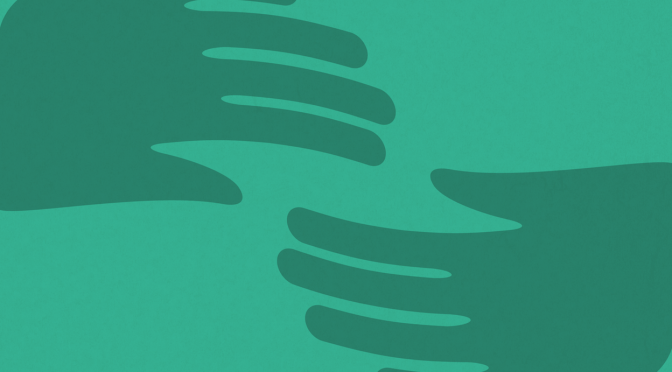By Josephine Li

Kimberly Roach
Even before Kimberly Roach started co-leading Legal Aid Ontario’s (LAO) Racialized Communities Strategy, she saw firsthand the need for a strategy to address the needs of racialized communities.
As a child, she moved from Jamaica to the Parkdale neighbourhood in Ontario and into apartments that she describes as “notorious.” She remembers the conditions were “horrible.” The majority of the tenants—new immigrants, many working in precarious jobs because of language barriers and discrimination—were exploited.
The tenants organized a tenants’ association. Kim’s stepfather, at one point, became the head of this association while Kim helped to raise awareness about tenants’ rights by delivering information flyers to all of the apartments in the 19-storey building that they lived in. The local clinic helped the tenants to take the landlord to court.
“We were poor—so lawyers weren’t accessible to us and the clinic provided the first legal help that we received,” she said. “It was the first time I could see the power lawyers had to help people.”
The early road towards a career in social justice
At one point, when she was 9 years old, Kim’s family took in a friend and her daughter when her partner abandoned her before sponsorship papers were filed. A domestic violence survivor, this friend—and Kim’s family—did not know about LAO.
To help her friend, Kim’s mother, who was a factory worker, put money towards hiring someone they thought was a lawyer Kim’s family friend was ultimately deported along with her child.
“Years later, when I was getting ready for law school, my mother made me promise to be a lawyer who helped people in need,” she remembers. “So those experiences and that promise to her is what pushed me towards social justice.”
A long overdue strategy for racialized communities
Though she worked at a number of clinics, Dundurn Community Legal Services and Rexdale Community Legal Clinic stand out because it was in a highly racialized area with a high level of poverty.
“We had a lot of repeat clients—and it felt like we were putting Band-Aids on issues,” she said. “I could see the gaps where people were falling through the system.”
Kim notes that, on the ground, it’s obvious what the issues are. It is clear that poverty and race are linked, and are often the factors that lead to legal problems multiplying and having a major impact on a person’s life down the road.
Just as she had observed in her childhood experiences, poverty and race, coupled with the fact that many people simply don’t know about legal aid, have led to a complete lack of understanding of their rights and how to get help to assert those rights.
A detailed look at the issues
LAO will be creating a Racialized Communities Strategy, which will expand legal aid services that better address the needs of racialized clients.
As part of the strategy, Kim and co-lead, Wayne van der Meide, have been meeting with various groups like child protection agencies. Even before the media reports started surfacing about the high numbers of Black and Aboriginal kids in care, they were starting to get a clearer sense of the issue.
“I’ve had clients involved with Children’s Aid, but I didn’t realize the volume of Black kids in care—that was shocking,” she says.
LAO started offering more coverage for more child protection issues last year—and highlighting what parents’ rights are. Word is slowly getting out to people that legal help is available even before things get to a point where people have to go to family court.
Kim mentions how, once teachers call Children’s Aid—even if it’s for something that Children’s Aid doesn’t handle, like when a child is misbehaving in school or when there are altercations between children—there’s still a duty to investigate. Too often, things can escalate quickly from there. A lawyer can often help families navigate the child protection system and resolve matters before they go to court.
Kim sees a recurring issue of parents not knowing their family’s rights. Whether it’s within the child protection system or the education system, many families are unaware that of the rights they have within the system, including the right to have a lawyer representing them.
In a report by the Ontario Human Rights Commission, interviews revealed there was a general feeling that school discipline policies have more of an impact on Black students and other racial minority communities, including the Tamil, Aboriginal and Latin American communities.
Based on early engagement sessions with various communities, she’s heard about how families are increasingly seeking out legal advice or representation for school disciplinary matters such as expulsion hearings.
The need to raise more awareness about legal aid
Kim and Wayne are currently working on a consultation paper that they will use to guide discussions with various communities. It’s their hope to get a better sense of how LAO can make changes to assist the largest number of clients.
One consistent theme has been the need for LAO to build more awareness about what it does and how people can access its services. It is Kim and Wayne’s hope that, by working with and developing relationships with people from all of the various communities that they have met with, they can empower people through knowledge.
Another thing Kim keeps hearing about is the need for LAO’s information available in other languages besides English and French. A recent initiative to begin translating various LAO brochures into the top requested languages is just one example of measures LAO is taking.
Kim says that, in listening to what people are saying, they will get a better understanding of what the issues are—and that, by working together with communities and agencies serving the communities, LAO can take steps towards addressing the various needs identified by the many communities that LAO serves.
“We need to look at who we’re serving and ask if we’re serving those who need our help? We need to ask how we are serving those communities and are we as accessible as the communities need us to be?” she states.
Often, the legal problems of the poor are associated with or are linked to their social, economic and personal concerns.
Kim says, “Our aim is to take a more comprehensive approach to the problems of racialized clients.”
LAO’s racialized communities strategy consultation
LAO’s consultation isn’t slated to start until later in the year, when Kim and Wayne will begin meeting with various representatives in different communities. It will offer them an opportunity to hear directly from the people who are most affected by inequities in the justice system and give LAO a sense of how the organization can better serve its clients.
In the meantime, both leads continue to meet with advocacy groups and community agencies.
To keep up to date on what both Kim and Wayne are learning, please visit LAO’s Racialized Communities Strategy site.
